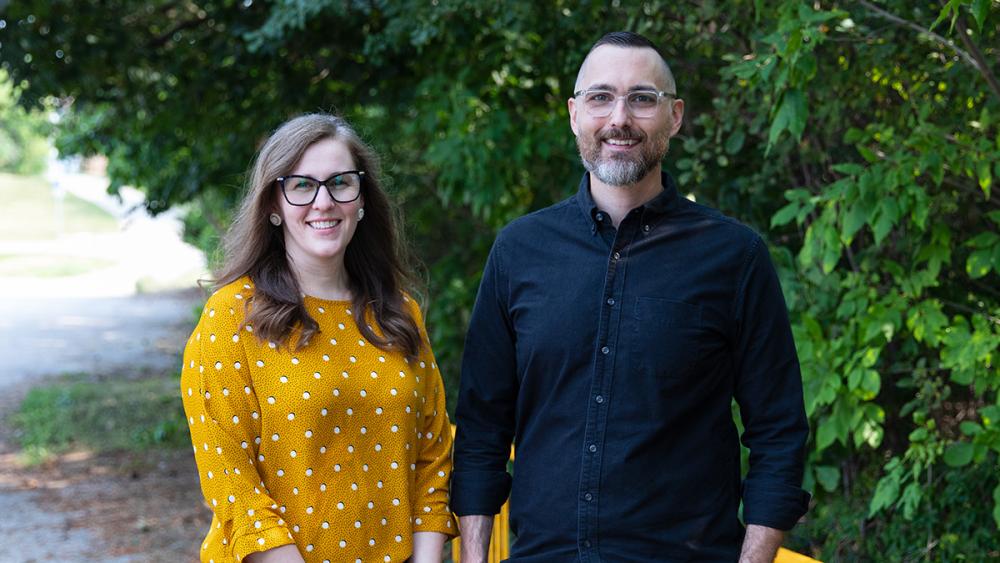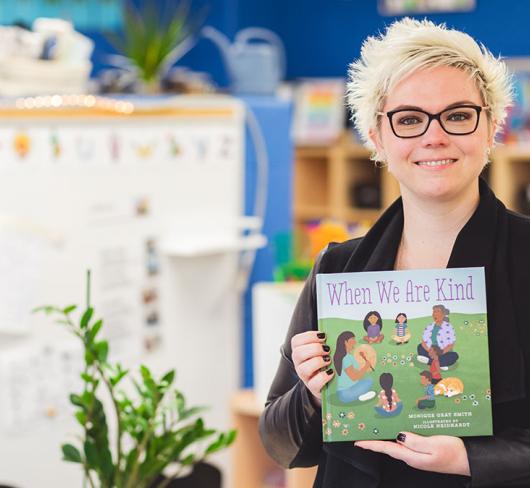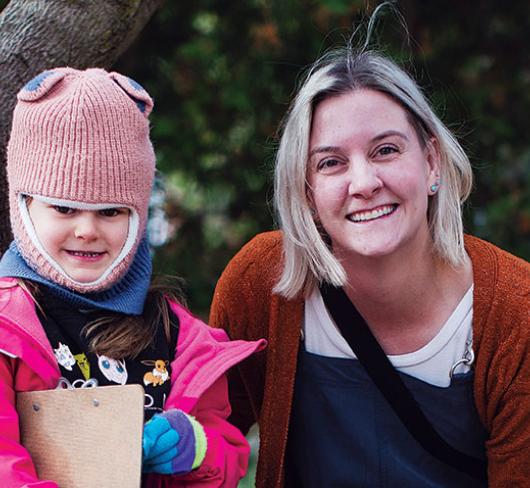
Recovering and Rebuilding: Ideas for Creating More Equitable Spaces in the Wake of COVID-19
A new school year usually brings with it feelings of excitement and hopefulness, combined, of course, with some nervousness about the year ahead. This year, however, feels significantly different. When speaking with colleagues about returning to school, the normal feelings of nervousness that surface near the end of summer have given way to acute anxiety.
Throughout the pandemic, educators have shown extraordinary resilience, creativity, compassion, flexibility and care for students and families all while enduring significant challenges both professionally and personally. Collectively, we have faced much over the past 18 months and many of us (educators and families alike) are still dealing with the residual stress. As we move forward in the new school year, it is important for us to think about how we can begin to recover and rebuild our classroom communities.
In order to begin the process of recovering and rebuilding, it is vital to take stock of where we have been and where we are currently.
Throughout this public health crisis, the Conservative government has consistently failed students, families and education workers by refusing to meaningfully address health and safety concerns, provide adequate funding for schools, improve paid sick days and lower class sizes. Most recently, the Ford government put forward a reopening plan that is, by many measures, inadequate and incomplete, and in some cases simply dangerous. At the time of writing, the plan does little to address concerns regarding the spread of variants, particularly the Delta variant, and the risks these variants pose to children who are not yet eligible for the vaccine. This plan also details loosening safety precautions which in turn risks further COVID-19 outbreaks and disruptions to in-person learning. In short, the plan does little to ensure a safe and sustainable return to in-person learning, which means we are entering another unpredictable year.
Over the last 18 months, we have also seen how the public health crisis has disproportionately impacted racialized and other marginalized communities. According to a Public Health Ontario report, released early in the pandemic, “the most ethno-culturally diverse neighbourhoods in Ontario, primarily those concentrated in large urban areas, experienced disproportionately higher rates of COVID-19 and related deaths compared to neighbourhoods that are less diverse.”
The report goes on to say that people living in neighbourhoods that already experience marginalization related to racism and discrimination have also been more likely to experience severe outcomes as a result of the COVID-19 virus than those living in primarily white neighbourhoods. Hospitalization and ICU admission rates were four times higher, and death rates were two times higher.
The pandemic has also highlighted and exacerbated inequities that disproportionately impact Indigenous Peoples, individuals who are racialized, people with disabilities and women, particularly those who work in precarious and unsafe working conditions.
It is also important to keep in mind that there are students and colleagues who are adjusting to learning and working in physical classrooms for the first time in 18 months. For students continuing to learn online, this will be another year in which they will be missing a physical connection to a school building and the people in it along with the activities and social opportunities that come with in-person learning. While all of us have experienced life and school during the pandemic in different ways due to varying privileges or forces of oppression, we carry our experiences with us into classroom spaces, whether in-person or online. Despite these circumstances, this new school year brings with it an opportunity to move forward in a way that promotes social justice, equity and political action.
Here are some steps to consider as we begin the process of recovering and rebuilding.
Disrupt the Notion of "Learning Loss"
From the various stay-at-home orders and the associated school closures to the many challenges of online learning, the pandemic has presented learning disruptions unlike any recent event we have experienced. It has become clear that online learning, in both its hybrid and remote forms, is not a substitute for students’ learning in school. Much discussion has emerged about the idea of learning loss to describe what students have “missed” because of the disruptions and challenges they have experienced over the course of the past year and a half. While it is certainly important to reflect on the impacts of students not being in school and the academic setbacks students may have faced during this time, it is equally important not to pathologize students as a result or to discount the learning that students engaged in at home. One problematic aspect of the notion of learning loss is that it can leave educators with the sense that students are broken and in need of “fixing.” We need to be cautious not to fall into this type of deficit thinking. Rather than focusing our attention on the notion of “learning loss” and how to fix our students, our focus should be on rebuilding our learning communities, which are foundational for true learning to take place.
Teach with a Trauma-Informed Lens
An April 2020 survey commissioned by Children’s Mental Health Ontario and Addictions and Mental Health Ontario found that since the COVID-19 pandemic began, 30 percent of parents surveyed reported that their children appeared to be more impacted by stress in their daily life than they were prepandemic, with a large percentage of parents noting changes in sleep patterns, eating habits, concentration levels and irritability. While this survey was taken mere months into the pandemic, it is safe to assume that the mental health of children has continued to be significantly impacted. While educators are not mental health professionals, we can take steps to create an environment that is supportive of students and sensitive to their experiences over the last 18 months.
In her recent book, Equity-Centered Trauma-Informed Education, author Alex Shevrin Venet discusses the ways in which educators can help students feel safe and supported at school. She writes, “A trauma-informed lens requires that we also critically think about the status quo in education and be willing to make significant changes to the way we do things.” To help guide educators in making these changes, Venet outlines six “Principles of Equity-Centered Trauma-Informed Education.” They include being anti-racist and anti-oppressive, focusing on social justice, seeing our student’s strengths with an asset-based approach, being systems-oriented by thinking about how we create an equitable ecosystem in your school/classroom rather than relying on a checklist of strategies and centering our shared humanity. Venet’s last principle is that a trauma-informed lens is universal and proactive, noting that while stress does not always lead to trauma responses, an equity-centred and trauma-informed education is beneficial for all students.
Build and Sustain Relationships
Recognizing the collective trauma that this past year and a half has brought us, this school year will require even more intentionality in how we collaborate, build and sustain relationships with students and their families, and how we cultivate spaces that are safe and inviting. Planning “getting to know you” and “community building” activities is a standard beginning of the year practice that often drops off after the first week of school in favour of more traditional curriculum-based learning. However, learning about our students and nurturing community in our classrooms, both in-person and online, needs to be an ongoing focus throughout the year. Building and sustaining relationships with students requires us to be genuine, empathetic, flexible and understanding. It means consciously making time to talk with our students about their lives and what they care about, affirming their identities and ensuring their voices are heard and represented when it comes to academic and community pursuits in the classroom. Community circles are one way to check in with students and can be done standing or sitting, formally or informally, daily or weekly, in-person or online. When facilitated with care, these opportunities for regular class-wide connection can help forge and maintain relationships, gauge the temperature of the class and celebrate each other. When it comes to building relationships with families and caregivers, it is crucial to ensure we see parents and caregivers as partners in education. Many caregivers took on an increased role in their child’s education during periods of online learning and all caregivers have valuable knowledge and insight that will help educators support their children. A caregiver survey can be a useful tool to gather information about their child’s experiences with schooling and the past 18 months that students may not articulate and can help educators learn more about the context of what school means for each family. Taking the time to make phone calls home at the beginning of the year and maintaining ongoing, respectful and positive communication is another investment in relationship building that benefits students and keeps caregivers looped into the classroom lives of their children.
Take Care of Ourselves
In October of 2020, the Canadian Teachers Federation (CTF) conducted a coast-to-coast survey focused on teacher mental health. Not surprisingly the results indicated that teachers were experiencing “unbearable levels” of stress and anxiety, as they struggled to cope with the demands of teaching during the pandemic. According to experts, the mental health impacts of the last 18 months will far outlast the pandemic. As such, thinking about our mental health and the mental health of our students will be important as we recover and rebuild in the wake of the pandemic. That said, there are many structural changes that must be implemented to help improve the mental health of all education workers and students, such as more funding for mental health services and the development of policies and procedures that actively support mental health. As educators, it is important that we reflect on our own limits when it comes to supporting the mental health of ourselves, our students, our colleagues and our families. Seeking support from outside is one way of taking control of our own mental health and supporting the mental health of others. Many boards in Ontario offer an employee assistance program that can help workers connect with mental health support for themselves or a family member. Becoming familiar with the various community agencies within your area that support mental health is another way to know what supports are available not only for yourself but for students and their families. Consulting with your board’s Professional Student Services Personnel such as social workers and psycho-educational consultants for guidance and support is another way to help find strategies to support the mental health of students. When thinking about your own personal limits and mental health, remember you are not an island; there are many individuals and agencies out there to help.
Get Involved in Political Action
During the pandemic, the decisions made by the Ford government made a difficult situation worse. The government’s indecisiveness, failure to listen to scientific and medical experts and misplaced priorities have cost thousands of lives in Ontario. Additionally, in June 2021, the Ford Conservatives used the notwithstanding clause to pass Bill 254. This bill stifles political dissent and the ability of unions, public interest groups, NGOs, community groups and others to openly debate important public policy issues ahead of the June 2022 provincial election. Educators need to use our collective power to help elect a new provincial government. Engaging in political action is key to having our voices heard as we begin to recover and rebuild. As educators there are many ways we can achieve this. Becoming involved in your local’s political action committee, drawing attention to important issues via social media, having conversations with colleagues, neighbours and family members about important issues, organizing with community members and volunteering with a local MPP candidate’s election campaign are just a few examples. The pandemic has highlighted just how important public services such as education, healthcare, transportation and community support programs are, and we need to do our part to help elect a government that will respect and invest in them.
Next Steps
If the pandemic has taught us anything it is that our collective ties and social infrastructure are too important to neglect. This challenging time has helped to reframe what is important in our schools, classrooms and communities. The practices that make these spaces more equitable, inclusive and welcoming are needed now more than ever as we move forward in the early stages of recovery and rebuilding in the wake of the ongoing COVID-19 pandemic. Through our collective efforts we can redefine what the “new normal” is and ensure that the recovery and rebuilding process creates spaces that are more equitable for all.
Here are some resources to help guide your personal recovery and rebuilding process.
Knowing your students/building relationships and community with students and their families:
- Start Here, Start Now: A Guide to Antibias and Antiracist Work in Your School Community by Liz Kleinrock provides advice and concrete examples of how to create spaces to affirm student identity, create community and communicate with parents and caregivers.
Trauma informed teaching:
- Equity-Centered Trauma-Informed Education by Alex Shervin Venet shares practical ways to reflect on our practice and build relationships while providing deep insight into trauma-informed education that centres equity.
Combating the notion of “learning loss”/ “learning gaps”
- In his article “’Learning Loss’ is a Dangerous Myth” (https://medium.com/age-of-awareness/learning-loss-is-a-dangerous-myth-bbb424f363ae) Toronto educator Mario Mabrucco explores many of the problematic aspects of the notion of “learning loss.”
Teaching for Social Justice:
- Cultivating Genius by Gholdy Muhammad highlights a historically responsive literacy framework for teaching that layers texts and focuses on the learning pursuits of identity, skills, intellect, criticality and joy. Sample lesson plans and templates are included.
- Learning for Justice (learningforjustice.org/, formerly Teaching Tolerance) provides free social justice related resources to educators who work with students from kindergarten through high school.
Mental health: knowing your limits and connecting to community resources:
- ETFO’s Member Mental Health site (etfo.ca/SupportingMembers/Employees/PRSMattersBulletin/Pages/Member%20Mental% 20Health.aspx) offers information and tips related to understanding and improving mental health, as well as resources for seeking support.
- Everyday Mental Health Classroom Resource (smho-smso.ca/emhc/) provides evidence informed mental health practices to be utilized in elementary classrooms.
Political Action:
- Visit BuildingBetterSchools.ca for various tips, strategies and resources to help you organize for public education
- Consider reaching out to your ETFO local office about how you can support the work of their Political Action Committee
- Consider volunteering with a local MPP candidate (one who respects public education).
Laura and Jonathan Temporal are members of the Peel Teacher Local.

